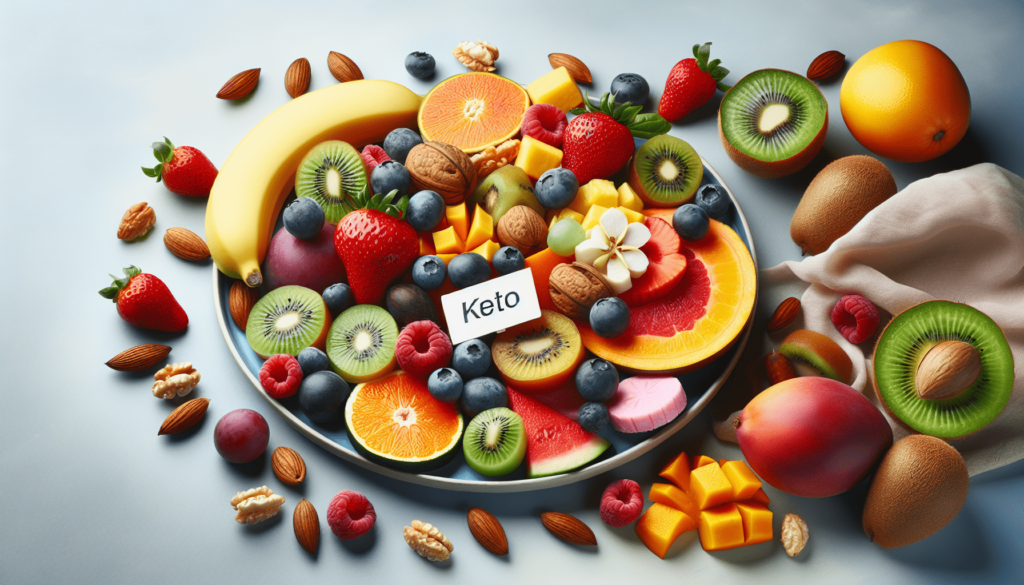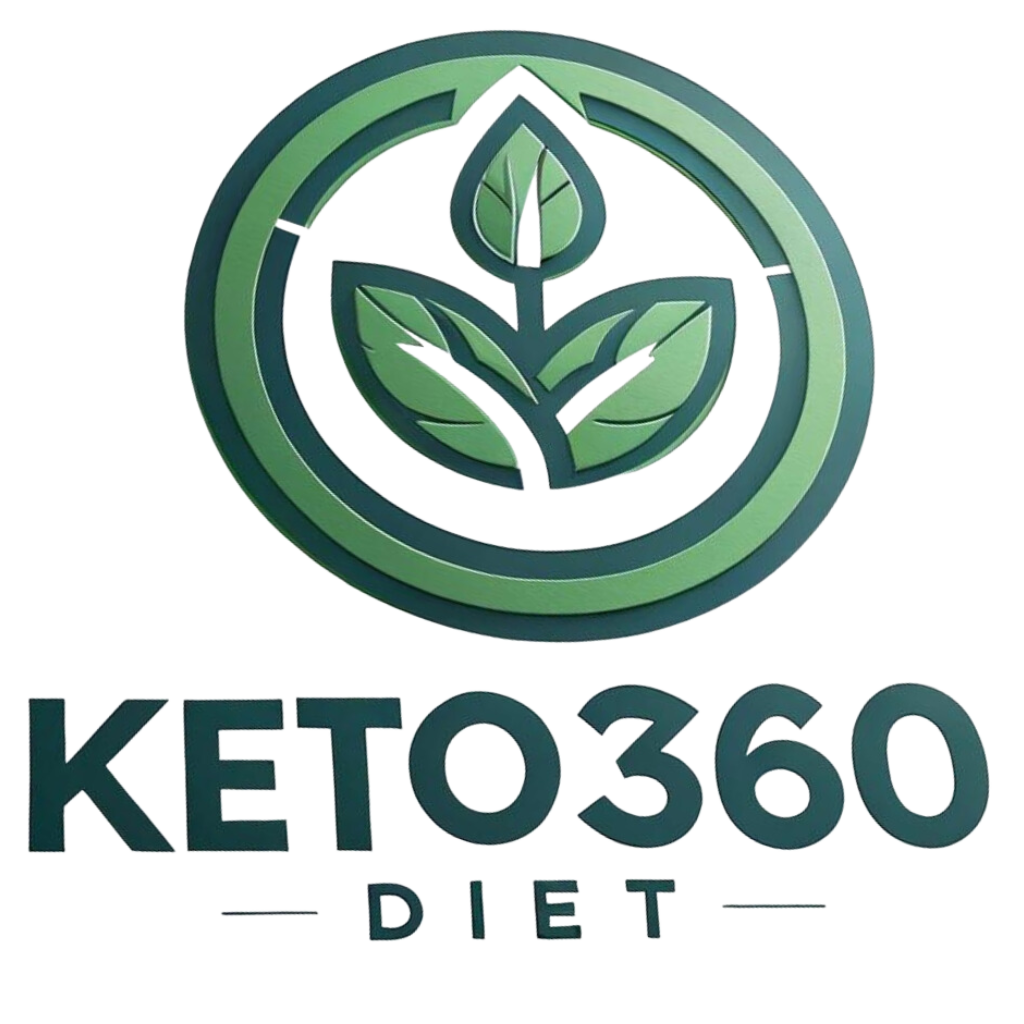Are you considering starting a Keto diet but are worried about falling into common traps? In this article, you will discover some simple yet effective strategies to help you avoid common pitfalls that can hinder your progress on the Keto diet. From identifying hidden carbs to managing electrolyte imbalances, we will guide you on your journey towards Keto success. So get ready to kickstart your healthy lifestyle and say goodbye to those pesky pitfalls!

Understanding the Basics
Defining the Keto Diet
The keto diet, short for ketogenic diet, is a low-carb, high-fat eating plan that involves drastically reducing your carbohydrate intake and replacing it with fat. By doing so, your body enters a metabolic state called ketosis, where it burns fat for energy instead of carbohydrates. This shift in fuel source can have numerous benefits, including weight loss, improved mental clarity, increased energy levels, and reduced inflammation.
Understanding Ketosis
Ketosis is the primary goal of the keto diet. It occurs when your body transitions from using carbohydrates as its main source of energy to burning fat. During ketosis, your liver produces molecules called ketones from fat breakdown, which your body uses for fuel. This metabolic state can help you shed excess weight, as it allows your body to tap into its fat stores more efficiently. However, it’s important to note that achieving and maintaining ketosis requires careful attention to your macronutrient intake.
Recognizing Common Mistakes
While the keto diet can provide remarkable benefits, it’s essential to be aware of common mistakes that people often make. One of the most significant errors is not consuming enough healthy fats. Since the keto diet is high in fat, it’s crucial to choose the right sources such as avocados, olive oil, and nuts. Another mistake is not consuming enough protein. Protein plays a vital role in preserving muscle mass and supporting various bodily functions. Lastly, many individuals fall into the trap of extreme restrictions or adopting a monotonous meal plan, which can lead to nutrient deficiencies and make it more challenging to stick to the diet long-term.
Setting Realistic Goals
Determining your Ideal Weight
Before embarking on any weight loss journey, it’s essential to determine your ideal weight. This can be done by calculating your body mass index (BMI), which takes into account your height and weight. However, keep in mind that BMI is just a general guideline, and other factors such as muscle mass and body composition should also be considered. Consulting with a healthcare professional or a registered dietitian can help you determine the most realistic and healthy weight goal for your individual circumstances.
Setting Achievable Targets
Once you have identified your ideal weight, it’s important to set achievable targets along the way. Instead of focusing solely on the end goal, break it down into smaller milestones. This approach allows you to celebrate your progress and stay motivated throughout your keto journey. Aim for realistic and sustainable targets, such as losing 1-2 pounds per week, as this gradual weight loss is more likely to be maintained in the long run.
Avoiding Unrealistic Expectations
While the keto diet can yield significant weight loss results, it’s crucial to avoid setting unrealistic expectations. Every individual’s body is unique, and weight loss progress can vary. Remember that sustainable weight loss is a journey, not a race. Embrace the non-scale victories, such as increased energy levels, improved mental focus, and better overall health. By shifting your focus from just the numbers on the scale to the holistic benefits of the keto diet, you’ll be able to maintain a positive mindset and stay on track.
Balancing Macronutrients
Focusing on Healthy Fats
Healthy fats are a crucial component of the keto diet. They provide the majority of your daily calorie intake and help keep you feeling satiated. Focus on incorporating sources such as avocados, coconut oil, butter, olive oil, and nuts into your meals. These fats not only provide essential nutrients but also add flavor and variety to your dishes. However, be mindful of portion sizes, as fats are calorie-dense, and consuming them in excess can hinder your weight loss progress.
Sufficient Protein Intake
Protein is another important macronutrient that should not be overlooked on the keto diet. It plays a vital role in preserving muscle mass, supporting immune function, and regulating hormones. Aim to consume an adequate amount of protein from sources like eggs, poultry, seafood, and tofu. However, avoid excessive protein intake, as it can be converted to glucose through a process called gluconeogenesis and potentially kick you out of ketosis. Consult with a registered dietitian to determine your optimal protein intake based on your specific needs and goals.
Limiting Carbohydrates
One of the key principles of the keto diet is restricting carbohydrate intake. When following the diet, it’s crucial to prioritize low-carb foods and minimize your consumption of high-carbohydrate foods like bread, pasta, rice, and sugary treats. Instead, opt for non-starchy vegetables like leafy greens, cauliflower, broccoli, and zucchini, which are low in carbs and high in nutrients. It’s important to read food labels and be mindful of hidden carbohydrates in processed foods or condiments that may jeopardize your ketosis.
Avoiding Extreme Restrictions
While limiting carbohydrates is essential on the keto diet, it’s crucial to avoid extreme restrictions that can lead to nutrient deficiencies and an unsustainable eating pattern. Remember to include a variety of food groups and focus on nutrient-dense options. Incorporating a wide range of vegetables, quality proteins, and healthy fats into your meals ensures you’re getting a well-rounded and balanced approach to your keto journey.
Eating a Variety of Foods
Including Non-Starchy Vegetables
Non-starchy vegetables should be a staple in your keto diet. They are low in carbohydrates, high in fiber, and packed with essential vitamins and minerals. Examples include leafy greens like spinach and kale, cruciferous vegetables like broccoli and cauliflower, and colorful options like peppers and tomatoes. Incorporating these vegetables into your meals not only provides necessary nutrients but also adds diversity and flavor to your diet.
Incorporating Different Protein Sources
To ensure you’re meeting your protein needs and avoiding taste fatigue, it’s important to incorporate a variety of protein sources into your keto meals. Doing so will not only provide essential amino acids but also prevent monotony in your diet. Consider adding options like fish, poultry, eggs, tofu, and even occasionally venturing into plant-based protein alternatives. Experimenting with different protein sources will keep your meals interesting and expand your culinary repertoire.
Exploring Healthy Fat Options
While traditional saturated fats can have a place in the keto diet, it’s important to prioritize healthier fat options. Choose sources like avocados, olive oil, nuts, seeds, and fatty fish rich in omega-3 fatty acids. These fats provide essential nutrients and contribute to overall heart health. By diversifying your fat sources, you can enjoy a wide range of flavors and textures while reaping the benefits of healthy fats.
Avoiding Monotonous Meal Plans
Sticking to the same meal plan day in and day out can quickly lead to monotony and boredom. To avoid this, focus on creating a variety of meals that incorporate different flavors, textures, and cooking techniques. Experiment with new recipes, spices, and herbs to keep your taste buds excited. The internet offers a wealth of keto-friendly recipes and resources that can inspire you to try new dishes and make your keto journey a culinary adventure.

Planning Meals in Advance
Creating Weekly Meal Plans
Meal planning is an essential tool for success on the keto diet. It helps you stay organized, saves time, and ensures you have a well-balanced and keto-friendly meal available at all times. Begin by creating a weekly meal plan that outlines your breakfast, lunch, dinner, and snacks for each day. Be sure to include a variety of protein, healthy fats, and non-starchy vegetables in your plan. This not only keeps you on track with your macronutrient goals but also prevents impulsive food choices and potential setbacks.
Batch Cooking and Food Prep
Batch cooking and food prep can be your secret weapons for a successful keto journey. Dedicate a day or two each week to prepare larger quantities of keto-friendly meals and portion them out for the week ahead. You can then refrigerate or freeze individual servings, making it convenient to grab a ready-made meal whenever you’re busy or pressed for time. Having pre-cooked meals on hand minimizes the risk of reaching for unhealthy options when you’re short on time and keeps you consistent with your keto eating plan.
Having Healthy Snacks On Hand
Stocking your pantry and fridge with healthy keto-friendly snacks is essential to combat hunger and cravings throughout the day. Be prepared and have a selection of snacks readily available, such as nuts, seeds, cheese, hard-boiled eggs, and low-carb vegetables like celery or cucumber. Pre-portioning these snacks into individual servings or keeping them in grab-and-go containers makes it easier to make smart snacking choices when hunger strikes. Remember to choose snacks that align with your macronutrient goals to maintain ketosis.
Staying Hydrated
Importance of Hydration
Hydration is crucial for overall health and well-being, especially when following the keto diet. Proper hydration aids digestion, supports optimal brain function, regulates body temperature, and helps maintain healthy skin. It’s essential to prioritize adequate hydration to avoid potential side effects of the keto diet, such as constipation and dizziness. Water is the best choice for hydration, as it contains no calories or additives. Aim to drink at least 8 to 10 glasses of water per day, or more if you’re physically active or live in a hot climate.
Drinking Sufficient Water
While it’s common knowledge that water is vital for hydration, it’s easy to forget to drink enough throughout the day. To ensure sufficient water intake, carry a water bottle with you wherever you go as a constant reminder. Set timers or use smartphone apps to prompt you to drink water regularly. If plain water becomes monotonous, try infusing it with citrus slices, herbs, or berries for a refreshing twist. By making hydration a priority and incorporating it into your daily routine, you’ll be able to maximize the benefits of the keto diet.
Avoiding Dehydration
Dehydration is a potential risk when following the keto diet due to the increased water loss associated with the metabolic state of ketosis. To avoid dehydration, pay attention to signs such as increased thirst, dry mouth, darker urine, and fatigue. Engage in mindful drinking practices and replenish lost fluids throughout the day. Keep in mind that factors like exercise, heat exposure, and alcohol consumption can further contribute to dehydration, so it’s essential to consume even more water under these circumstances.
Monitoring Electrolyte Intake
Understanding Electrolyte Imbalance
The transition into ketosis can lead to changes in electrolyte balance in the body, which may result in symptoms like fatigue, muscle cramps, headaches, and dizziness. Electrolytes are minerals with an electric charge and include nutrients like sodium, potassium, and magnesium. To maintain proper electrolyte balance on the keto diet, it’s important to monitor your intake of these minerals and make necessary adjustments.
Ensuring Adequate Sodium Levels
Sodium is an essential electrolyte that plays a vital role in maintaining fluid balance, nerve function, and muscle contractions. When following the keto diet, your body excretes more sodium through increased urine production. To counteract potential sodium depletion, be mindful of your salt intake and consider adding a moderate amount of salt to your meals. Additionally, incorporating foods like bone broth, pickles, and olives into your diet can help ensure adequate sodium levels.
Supplementing Potassium and Magnesium
Potassium and magnesium are two electrolytes that are often lower in individuals following a keto diet. Potassium is crucial for maintaining proper nerve function, muscle contractions, and overall heart health. Good sources of potassium on a keto diet include avocados, nuts, spinach, and salmon. Magnesium plays a role in energy production, nerve function, and muscle relaxation. You can increase your magnesium intake by incorporating foods such as dark chocolate, almonds, spinach, and pumpkin seeds into your diet. If necessary, consult with a healthcare professional to determine if supplementation is needed to maintain optimal electrolyte balance.
Getting Sufficient Fiber
Importance of Fiber on Keto
While the keto diet is low in carbohydrates, it’s still essential to prioritize sufficient fiber intake. Fiber not only supports healthy digestion but also helps regulate blood sugar levels, aids in weight management, and promotes feelings of fullness and satiety. To ensure adequate fiber intake on the keto diet, focus on including low-carb, high-fiber foods such as leafy greens, avocados, chia seeds, flaxseeds, and coconut flour. These fiber-rich foods can help maintain bowel regularity and support overall gut health.
Choosing High-Fiber Foods
When selecting foods for your keto meals, opt for nutrient-dense choices that are also high in fiber. Non-starchy vegetables like spinach, kale, broccoli, and cauliflower are excellent choices to boost your fiber intake. Berries like raspberries and blackberries are also lower in carbohydrates and higher in fiber compared to other fruits. Chia seeds and flaxseeds are great additions to smoothies, yogurt, or baked goods, providing an extra dose of fiber and omega-3 fatty acids. By incorporating these high-fiber foods into your diet, you can make sure you’re meeting your recommended fiber intake while maintaining ketosis.
Using Fiber Supplements if Needed
If you find it challenging to reach your daily fiber goal through whole foods alone, fiber supplements can be a convenient option. There are various fiber supplements available, such as psyllium husk, acacia fiber, and glucomannan, that can help you increase your intake. However, it’s crucial to choose a fiber supplement that does not significantly impact blood sugar levels to maintain the principles of the keto diet. Consider consulting with a registered dietitian or healthcare professional to determine which fiber supplement is most suitable for your needs.
Prioritizing Quality Sleep
Role of Sleep in Weight Loss
Quality sleep is an often overlooked but essential factor in weight loss and overall health. During sleep, your body repairs, restores, and regulates various functions crucial for optimal well-being. Lack of sleep can disrupt hormone balance, increase hunger and cravings, and negatively impact your metabolism. Prioritizing quality sleep on the keto diet can enhance your weight loss efforts and support your overall health goals.
Establishing a Bedtime Routine
Establishing a consistent bedtime routine can help signal your body that it’s time to wind down and prepare for sleep. Aim to create a relaxing environment in your bedroom, free from distractions such as electronics and bright lights. Engage in calming activities like reading, meditating, or taking a warm bath before bed. Set a regular sleep schedule and aim for seven to nine hours of uninterrupted sleep each night. By adhering to a bedtime routine, you can improve sleep quality and optimize your weight loss success on the keto diet.
Creating a Sleep-Friendly Environment
Creating a sleep-friendly environment is crucial for quality restorative sleep. Ensure your bedroom is cool, dark, and quiet to promote optimal sleep conditions. Invest in comfortable bedding and a supportive mattress to maximize comfort. Consider using blackout curtains or an eye mask to block out any excess light that may disrupt your sleep. If external noises are an issue, consider using earplugs or a white noise machine to mask disruptive sounds. Tailoring your bedroom environment to promote better sleep will positively impact your overall health and weight loss journey.
Seeking Professional Guidance
Consulting with a Registered Dietitian
Navigating the keto diet successfully and safely can be daunting, especially if you’re new to the concept of macronutrient manipulation. Consulting with a registered dietitian who specializes in the keto diet can provide valuable guidance, personalized meal plans, and support throughout your journey. A registered dietitian can help ensure you’re meeting your nutritional needs, avoiding common pitfalls, and adjusting your plan as needed. Their expertise can help you optimize your results and make the keto diet a sustainable and enjoyable lifestyle.
Seeking Medical Advice if Necessary
If you have any underlying health conditions or are on specific medications, it’s important to seek medical advice before starting the keto diet. Your healthcare provider can evaluate your individual circumstances and advise on any potential risks or adaptations needed. They can address any concerns or questions you may have and provide guidance tailored to your unique situation. Your health and well-being should always be a priority, and consulting with a healthcare professional ensures you’re approaching the keto diet safely and effectively.
Joining a Supportive Community
Embarking on a new eating plan can be challenging, and having a support system can make a world of difference. Consider joining a supportive community of individuals who are also following the keto diet. These communities can provide invaluable resources, tips, recipe ideas, and a space to share experiences and challenges. Online forums, social media groups, and local meetup groups are great places to connect with like-minded individuals who can offer guidance and encouragement on your keto journey. Together, you can celebrate successes, overcome obstacles, and find motivation to stay committed to your goals.
By understanding the basics of the keto diet, setting realistic goals, balancing macronutrients, eating a variety of foods, planning meals in advance, staying hydrated, monitoring electrolyte intake, getting sufficient fiber, prioritizing quality sleep, and seeking professional guidance, you can navigate the keto diet successfully and optimize your chances of achieving your weight loss and health goals. Remember, the key to a successful keto journey is finding a balance that works for you and making sustainable lifestyle changes. So embrace the adventure, enjoy the process, and empower yourself to thrive on the keto diet. You’ve got this!

